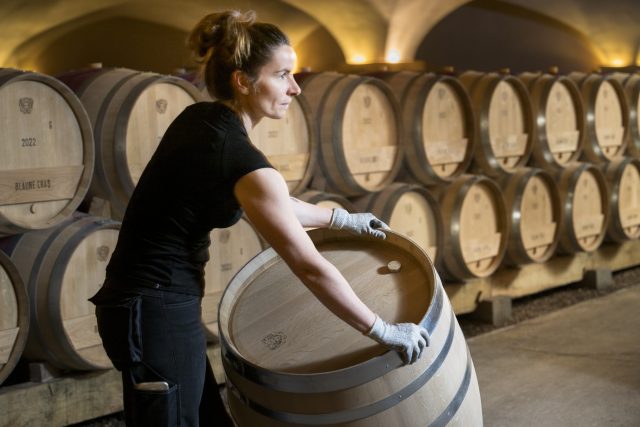This website uses cookies so that we can provide you with the best user experience possible. Cookie information is stored in your browser and performs functions such as recognising you when you return to our website and helping our team to understand which sections of the website you find most interesting and useful.
Bourgogne: five reasons to take a fresh look at the region
The famous French region still has surprises in store. db discovers five key reasons to reevaluate Bourgogne and its wines.

1. A revolution in quality
Bourgogne’s strong reputation for quality is long-standing, with prestige that dates back centuries. Yet recent years have seen ongoing efforts to safeguard that reputation. Since the 1980s, Bourgogne has been overhauling practices to achieve the highest quality at every opportunity.
In the 1990s, the Bourgogne Wine Board (BIVB) launched its technical department to encourage best practice. Achievements in that decade included collective monitoring of ripeness to inform harvest dates and the widespread adoption of temperature-controlled fermentation vessels. The next decade drove progress even further. Among the changes were preventing oxidation by using inert gases, protecting old vines rather than uprooting them, and choosing more reliable corks as indicated by BIVB research.
2. Bold new thinkers
This technological revolution is continuing in Bourgogne, but is now shepherded by a younger cohort of producers. Alongside their technological know-how, this new winemaking generation is bringing a cultural shift towards sustainability.
Bourgogne is thoroughly rebutting any assumption that sustainable viticulture is just for drier and warmer climates. Its recent development has been rapid. Between 2018 and 2022, the number of producers either certified organic or in the process of organic certification almost doubled. When also considering other forms of accreditation, such as the high environmental value (HVE) or Terra Vitis schemes, more than one-third of producers have sustainable certification. Though often building on generations of pre-existing sustainable activities, certification has helped recognise best practice and plan for the region’s future.
Younger producers have also helped drive region-wide commitments. Bourgogne has plans to cut carbon emissions by 60% by 2035, with the other 40% being offset.

3. Off the beaten track
The grand cru and premier cru vineyards of Bourgogne are world-famous, offering some of the finest examples of Pinot Noir and Chardonnay on the market. However, producers are increasingly promoting other appellations on the world stage.
For lovers of still Pinot Noir and Chardonnay, there are plenty of areas that provide high-quality wines without breaking the bank. The Bourgogne Régionale AC and its specific denominations (such as Bourgogne Chitry and Bourgogne Côte d’Or) are ideal entry points for elegant, early-drinking wines. Meanwhile, the Mâcon appellation and its associated denominations provide affordable Chardonnay in a ripe, full style, as well as a few reds made from trendy Gamay. Then there are the village wines: alongside famous names are under-the-radar gems such as Irancy, Givry, or Saint-Véran.
The region also makes styles that many drinkers are yet to discover. Bourgogne Aligoté is a dedicated appellation for the thirst-quenching local grape, and is starting to grow in renown. Meanwhile, crémant de Bourgogne can act as a keenly-priced traditional method sparkling wine for the discerning wine lover. Coming in well below Champagne prices, it is now a popular option for a sparkling treat.
4. Two great vintages
In a region known for its expressive wines, vintage variation should be anticipated. Luckily for buyers of Bourgogne wines, the region has just experienced two great years.
Both 2022 and 2023 were strong years for producers. A hot summer in 2022 provided impressively consistent quality, as growers could reliably ripen the entire crop. Although decades ago it may have been too warm, winemakers are now well-practised in maintaining freshness and balance in such conditions, meaning the wines still showed typical elegance.
In 2023, the challenge came from variable weather conditions, with hair-raising risks from thunderstorms, hail and heatwaves. Yet the wines emerged poised, with both ample ripeness and enlivening acidity.
Crucially, both matched the high quality with plentiful production. This means the vintages will be ideal for stocking up, whether for ready-to-drink, good-value bottles or more ambitious examples deserving of bottle age.
5. A region like no other
With historical city centres, beautiful countryside and an enviable gastronomic heritage, the Bourgogne region is popular even with teetotallers. However, a trip can easily be centred around the region’s winemaking heritage.
Wine runs through the calendar, with events across the year to celebrate local production. These range from dedicated tasting festivals to jazz nights, picnics and marathons.The BIVB audits hundreds of cellars under its “Vignobles & Découvertes” scheme, which ensures that visitors get the best possible experience from cellar visits and flights of wine to guided hikes. Visitors can download their guide to a perfect Bourgogne trip on the region’s dedicated website.


